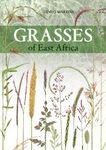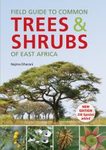Flora / Fauna Identification Key
By: Mauricio Velayos(Editor), Carlos Aedo(Editor), F Cabezas(Editor), M de la Estrella(Editor), M Fero(Editor), P Barberá(Editor)
529 pages, 320 plates with colour photos; 1 colour map, colour distribution maps
![Flora de Guinea Ecuatorial, Volume 5: Leguminosae Flora de Guinea Ecuatorial, Volume 5: Leguminosae]()
Click to have a closer look
About this book
Customer reviews
Related titles
About this book
Language: Spanish
The aim of the present work is to facilitate the identification of native or naturalised vascular plants from Equatorial Guinea. The balance between the status of floristic knowledge of a country such as Equatorial Guinea and the need for undertaking a flora which might serve as a useful tool, made us consider as part of the aim of the work that in the keys we should include all the species whose presence has been recorded in the neighbouring countries: Cameroon (Cam), Gabon (Gab) or São Tomé and Príncipe (ST), as these might appear within the area under study.
However, this criterion is not easily applied to the Leguminosae as this would mean that some genera would include many species of improbable presence in Equatorial Guinea due to their habitat or area of distribution. We have therefore included in the keys the following species from the neighbouring countries: 1) those cited in São Tomé & Príncipe (Liberato, 1972, 1973 and 1976; Lock 1989), 2) those cited in Mount Cameroon (Cable & Cheek, 1998), 3) those cited in Gabon and the remaining Cameroon territory, to a distance of less than 150 km from the Río Muni border. These species were determined by consulting the most important collections for these two countries: K (Cameroon) and WAG (Gabon).
A previous, complementary version of this work is to be found published in three parts, each corresponding to one of the subfamilies considered, by Estrella & al. (2005, 2006, 2010a). These papers lack keys of identification and reference to the types and descriptions. However, in these studies a thorough listing of the specimens studied is provided. In the present study, the specimens that are mentioned in the text refers only to a few testimonies per province; this is complemented by a complete list of collections at the end of the work.
In all, in these three works 320 taxa of Leguminosae were accepted for the flora of Equatorial Guinea (35 in Annobón, 141 in Bioko and 258 in Río Muni). Now, after the incorporation of new material and amore detailed study of these, the final figure stands at 319 (36 in Annobón, 141 in Bioko and 268 in Río Muni). This is due mainly to the taxonomic work that is being undertaken on some genera, such as, for example: Antonotha (F.J. Breteler, WAG), Berlinia (B. Mackinder, K) or Isomacrolobium (F.J. Breteler, WAG). These reviews will mean the reinterpretation of some taxa. If to this we add the fact that there still exist a significant number of species present in the neighbouring countries that may, in all probability, be located in Equatorial Guinea, it should not be surprising if shortly these figures are again to be altered.
Customer Reviews
Flora / Fauna Identification Key
By: Mauricio Velayos(Editor), Carlos Aedo(Editor), F Cabezas(Editor), M de la Estrella(Editor), M Fero(Editor), P Barberá(Editor)
529 pages, 320 plates with colour photos; 1 colour map, colour distribution maps


















![Flora Vascular de Canarias [The Vascular Flora of the Canary Islands]](http://mediacdn.nhbs.com/jackets/jackets_resizer_medium/26/262479.jpg?height=150&width=102)


















